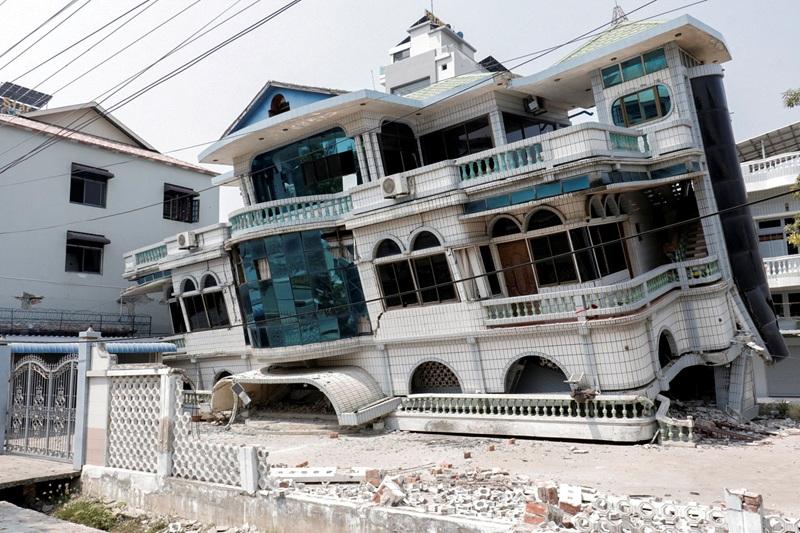On Monday, Myanmar’s government announced a week of national mourning for the devastating earthquake that hit the country last Friday. The 7.7-magnitude earthquake caused widespread damage, and the death toll has now surpassed 2,000 people. Sadly, rescue efforts are slowing down, and hopes of finding more survivors are fading.
National Mourning and Tributes
In a statement, the ruling junta (the government in control) said that flags will fly at half-mast until April 6 to honor the lives lost and the destruction caused by the earthquake. On Tuesday, there will be a minute of silence at 12:51:02 pm, the exact time when the earthquake struck. The government asked everyone to stop what they’re doing and remember the victims. This includes halting broadcasts, offering prayers at temples, and showing mourning symbols in the media.
The Situation in Mandalay
The earthquake’s epicenter was near Mandalay, Myanmar’s second-largest city with over 1.7 million people. The situation is so bad that many people are still sleeping in the streets, as their homes are destroyed and they fear more aftershocks (small earthquakes). People, including children, are sleeping on blankets in the streets, far from buildings that might fall.
Despite the challenges, the people of Mandalay are coming together to support one another, even preparing for Eid al-Fitr prayers, which mark the end of Ramadan.
The Death Toll and Missing People
As of Monday, the government confirmed that 2,056 people have died, over 3,900 are injured, and 270 are still missing. The toll is expected to rise further. Among the victims are three Chinese nationals and two French citizens. The quake was so powerful that 19 people died in Thailand, where the building of a 30-story tower collapsed.
Struggles of the Hospitals
Mandalay’s hospital is overwhelmed and had to evacuate many patients, who are now being treated outside, in the hospital’s parking lot. People lie under makeshift tarps to protect themselves from the intense tropical sun, while medics try their best to care for the injured.
International Help and Ongoing Crisis
Myanmar has been facing a civil war for years, making it harder for the country to recover from disasters like this. Even before the earthquake, Myanmar’s economy was struggling, and the country had very few resources for healthcare and infrastructure.
The World Health Organization (WHO) has called this a top-level emergency, and it’s asking for $8 million to save lives. The International Federation of Red Cross and Red Crescent Societies has asked for over $100 million in aid to help with the disaster.
Foreign Help Arrives
Myanmar has rarely accepted foreign help in the past, but this time, the junta (military government) is asking for international assistance. Countries like China, Russia, and India have already sent aid. But while rescue efforts are happening, the military continues to fight against opposition groups, and there are reports of airstrikes being carried out in conflict areas.
A Long Road Ahead
In addition to the earthquake, Myanmar is struggling with a long civil war that has displaced millions of people. Even as people in Myanmar work together to rebuild, the challenges are enormous. The earthquake has added even more pain to a country already going through tough times.
Around the world, people are watching and waiting to see how Myanmar will recover from this tragedy. The humanitarian crisis is far from over, and the road to recovery will be long and difficult.
Hope and Recovery
Despite the challenges, there’s still hope. Rescue teams in Bangkok, Thailand, continue to search through the rubble of the collapsed building, still hoping to find more survivors.
As Myanmar mourns its losses and faces the huge task of rebuilding, the world is coming together to help those in need.

















